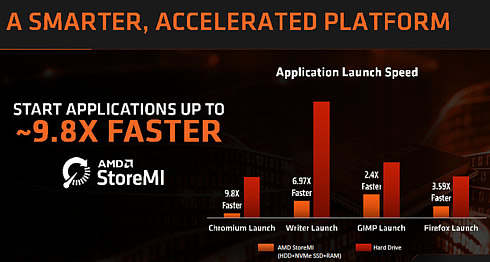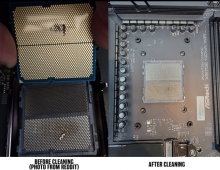
AMD Unveils B450 Chipset-based Motherboards
AMD continues to support the Socket AM4 platform alive and is aiming at budget PC users with new B450 chipset-based motherboards.
The B450 chipset is the successor to B350, with lower power and features such as Precision Boost 2, XFR2, and StoreMI support. More than 25 motherboard models based on the new chipset have already been announced by vendors such as MSI, ASRock, ASUS, and GIGABYTE.
The new B450 chipset launch compliments the release of the Ryzen 2000 series processors, with AMD looking at its current mid-range and high-end parts. The B450 chipset is designed to be a cheaper entry point into the ecosystem, even for users picking up the eight-core Ryzen 2700X ($329) and hex-core Ryzen 2600X ($229) units and going to overclock.
Like the already released X470 Promontory chipset, the B450 chipset
Compared to the previous first generation B350 chipset, the B450 does not brings anything new in regards to USB connectivity, storage options and PCI lanes. However AMD has added a couple of new technologies to bolster the appeal of the new budget-focused chipset.
The B450 and the B350 chipsets share native support for the same USB configuration, the same SATA configuration, support for a single M.2 PCIe 3.0 x4/SATA port, and six PCI lanes dedicated to PCIe 2.0 slots. They also both enable support for the same PCIe 3.0 bifurcation, giving a single PCIe 3.0 x16 slot, focusing these systems on a single GPU.



As with the jump from the X370 to the X470 chipsets, a primary difference from B350 to B450 come through lower power consumption - the B450 chipset runs a lower powered integrated controller which reduces the idle power draw by just under 2 W, from 6.8 W to 4.8 W.
Another big feature is AMD's StoreMI storage technology. This enables users to unify the various storage in their system to make the best arrangement for the fastest access to data.
One of the biggest changes, related to the Ryzen-2000 series, is in how the processor implements its turbo. Until recently, processors have relied on a step function implementation. The system determined how many threads are loaded, attempted to implement a specific frequency on those cores if possible, and then followed the look-up table relating thread count to frequency. AMD's goal in Precision Boost 2 is to make this process more dynamic: the system will determine how much of the power budget is still available, and turbo as much as possible until it hits one of the limiting factors, such as the total chip peak power; the individual core voltage/frequency response; the thermal interactions between neighboring cores; the power delivery limitations to individual cores/groups of cores and the overall thermal performance.
In addition, the Extended Frequency Range 2 (XFR2) technology, which still relates to thermals, although the definition is applied to any core loading: if the CPU is under 60 degrees C, the processor can boost no matter what the loading is above its Precision Boost 2 frequency. The core still has to be within a suitable voltage/frequency window to retain stability, however.





















